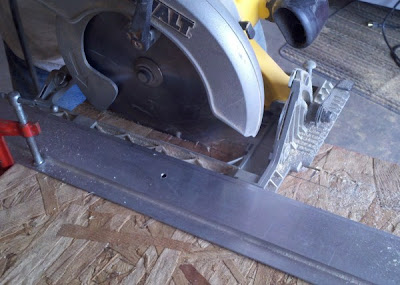Today we are starting out with making our makeshift brooder. Something we can take apart and put away after hatch season, oh wait, does hatch season ever end??? Well, for me, it HAS to end but for some, it really doesn't :D
Anyway, were making this about 4X6 or 3X8 (haven't fully decided yet) and my hope is that this will hold the chicks for almost up to six weeks of age (these are standard LF chicks). I want to keep them as separate from the big ladies as I can until they are strong enough to overcome anything the older ladies are carrying around with them. You know...those, sometimes hidden, diseases like Mereks...they say it's VERY common in chickens and if you have chickens you have to assume you have Mereks. I'm just not taking that chance so separate they will remain until they are older and the vaccine has a chance to take effect.
So what we have are two large sheets of plywood (4X8), six 1X2 (for the screened cover (directions to come later)) and some hardware (will post more about that later) and of course pine shavings, a heat lamp with bulb, feeder, waterer, some vitamins for the first week, chicken starter, water, paper towel for two days (laid on top of the pine shavings for first two days) and some baby grit (for later). Will try to get pictures as we go just in case this turns out to be an awesome thing :D
This is my first time actually making a brooder. Usually I just use the watermelon boxes (3.5X 4.5 feet) but the stores have been making it so impossible to get them, I got tired of the chase! Yes it was free, and YES it worked WONDERFULLY (keep in mind this does NOT hold 25 chicks for a full six weeks...too small, but it does hold them for about 4 weeks just fine) but...I'm just not into chasing around anymore so were finally gonna break down and make one!! Will add some pictures by the end of the day on our adventure.





























